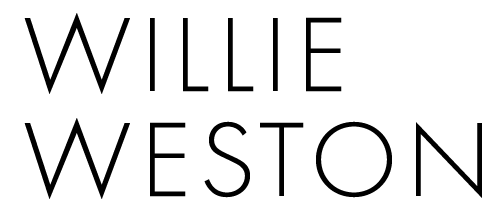Mrs. N. Yunupingu: mayilimiriw
Installation view of 'Nyapanyapa Yunupingu', 24 January - 18 February 2017, Roslyn Oxley9 Gallery. Courtesy the artist and Roslyn Oxley9 Gallery, Sydney.
This piece first appeared on The Design Files on 18 May 2017. Updated March 2024.
Mrs. N. Yunupingu (1945-2021) was an artist of great originality, irreverence and dynamism. She was a Yolngu woman from Yirrkala, near Nhulunbuy in North-East Arnhem Land, Northern Territory.
Working through Buku Larrnggay Mulka art centre in Yirrkala, Mrs. N. Yunupingu created fresh and innovative paintings, prints and carvings. She used both traditional materials indigenous to her home – natural ochres and the bark of stringybark trees – and manmade materials such as paint pens and acetate. She was driven to make art:
“I miss it when the bark is too dry to harvest or I can’t find carving wood or make a print. It is the way I was brought up. If I cannot paint I have to go and get fish or oysters or yams. I cannot sit and do nothing.”
In the 1970s Mrs. Yunupingu was nearly killed by a charging water buffalo. Drawn to depicting this seminal event from her own personal history, in 2008 she made a “dramatic departure” from the traditional artistic conventions of North-East Arnhem Land and began to express a “subjective, individualistic and linear narrative construction…totally out of step with all previous Yolngu art”, says Will Stubbs, Coordinator of Buku Larrnggay Mulka. Yolngu artists typically inherit a visual language – designs based on ancestral stories and kinship systems – and their level of cultural initiation determines their right to express those designs and stories in their art. (This is a fascinating and complex subject – interested readers can learn more here and here.)
Mrs. N. Yunupingu, Dharpa, 2016, painting on board, 122 x 122 cm. Courtesy the artist and Roslyn Oxley9 Gallery, Sydney.
Mrs. N. Yunupingu, Ganyu, 2016, painting on board, 167 x 122 cm. Courtesy the artist and Roslyn Oxley9 Gallery, Sydney.
Aerial view of North-East Arnhem Land. Photo: Peter Eve.
Installation view of Mrs. N. Yunupingu, Light Painting, 2010, 18th Biennale of Sydney, Museum of Contemporary Art, Sydney, 2012. Courtesy the artist and Roslyn Oxley9 Gallery, Sydney.
Mrs. Yunupingu’s bold approach was met with great excitement within the art world. One of her first works depicting the buffalo incident, a bark painting and accompanying video work, won the 3D Award in the 2008 Telstra National Aboriginal and Torres Strait Islander Art Award. She held her first solo exhibition with Roslyn Oxley9 Gallery that same year, and earned a reputation for her experimental use of non-traditional materials. In 2012 she exhibited Light Painting (2011) at the Biennale of Sydney, a projection composed of 110 drawings in white paint pen on clear acetates. The drawings were scanned into an algorithmic computer program that randomly selects and overlays the acetates with varying levels of opacity. Each time the work is viewed the layering – and ultimately the work itself – is different.
Mrs. Yunupingu’s works are often entitled mayilimiriw, which translates as ‘meaningless’. This title acknowledges her work’s lack of sacred meaning in the context of long-held painting traditions of North-East Arnhem Land. However, as evocations of her elemental relationship to the land and sea, her personal memories and her daily lived experience, Mrs. Yunupingu’s works are far from meaningless. They are some of the most exciting contemporary art being made in Australia right now.
Installation view of 'Nyapanyapa Yunupingu', 24 January - 18 February 2017, Roslyn Oxley9 Gallery. Courtesy the artist and Roslyn Oxley9 Gallery, Sydney.
Early works by Mrs. N. Yunupingu are part of Balnhdhurr – A Lasting Impression, a touring exhibition currently showing at the University of Newcastle (12 April – 15 July 2017). She is also part of a major US touring exhibition, Marking the Infinite: Contemporary Women Artists from Aboriginal Australia, showing at institutions across the USA from 2016-2019. And, Nyapanyapa was recently announced as a Finalist in the 2017 Telstra National Aboriginal and Torres Strait Islander Art Award – winners will be announced in August.
Mrs. N. Yunupingu, Untitled, 2016, bark painting, 126 x 71 cm. Courtesy the artist and Roslyn Oxley9 Gallery, Sydney.
Mrs. N. Yunupingu, Lines, 2016, bark painting, 192 x 59 cm. Courtesy the artist and Roslyn Oxley9 Gallery, Sydney.
Mrs. N. Yunupingu, Untitled, 2016, bark painting, 122 x 64 cm. Courtesy the artist and Roslyn Oxley9 Gallery, Sydney.
Installation view of 'Nyapanyapa Yunupingu', 24 January - 18 February 2017, Roslyn Oxley9 Gallery. Courtesy the artist and Roslyn Oxley9 Gallery, Sydney.
Mrs. N. Yunupingu, Dharpa / Circles, 2016, bark painting, 164 x 101 cm. Courtesy the artist and Roslyn Oxley9 Gallery, Sydney.
Mrs. N. Yunupingu, Dharpa, 2016, bark painting, 137 x 59 cm. Courtesy the artist and Roslyn Oxley9 Gallery, Sydney.
Installation view of 'Nyapanyapa Yunupingu', 24 January - 18 February 2017, Roslyn Oxley9 Gallery. Courtesy the artist and Roslyn Oxley9 Gallery, Sydney.













